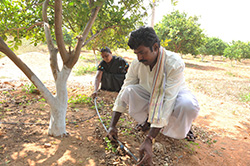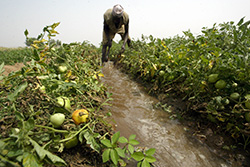Irrigation Management
 In an agriculture in constant evolution, irrigation needs to adapt to new, more stringent requirements: the supply of water within large irrigated systems needs to be much more reliable and flexible than in the past.
In an agriculture in constant evolution, irrigation needs to adapt to new, more stringent requirements: the supply of water within large irrigated systems needs to be much more reliable and flexible than in the past.
The last 50 years have seen remarkable developments in water resources and in agriculture.
Massive developments in hydraulic infrastructure have put water at the service of people.
While the world population grew from 2.5 billion in 1950 to 6.5 billion today, the irrigated area doubled and water withdrawals tripled.
Agricultural productivity grew thanks to new crop varieties and fertilizers, fueled by additional irrigation water. World food production outstripped population growth. And the greater use of water for irrigated agriculture benefited farmers and poor people—propelling economies, improving livelihoods, and fighting hunger.
 But much unfinished business remains. In 2003, 850 million people in the world were food insecure, 60% of them living in South Asia and Sub-Saharan Africa, and 70% of the poor live in rural areas. In Sub-Saharan Africa the number of food-insecure people rose from 125 million in 1980 to 200 million in 2000.
But much unfinished business remains. In 2003, 850 million people in the world were food insecure, 60% of them living in South Asia and Sub-Saharan Africa, and 70% of the poor live in rural areas. In Sub-Saharan Africa the number of food-insecure people rose from 125 million in 1980 to 200 million in 2000.
FAO has developed a multi-language training package for modernization and rehabilitation of large scale irrigation schemes and has applied it in 20 countries.
